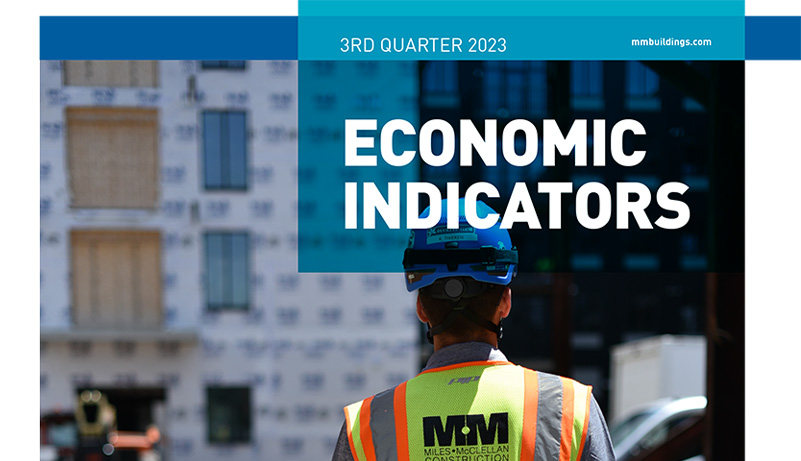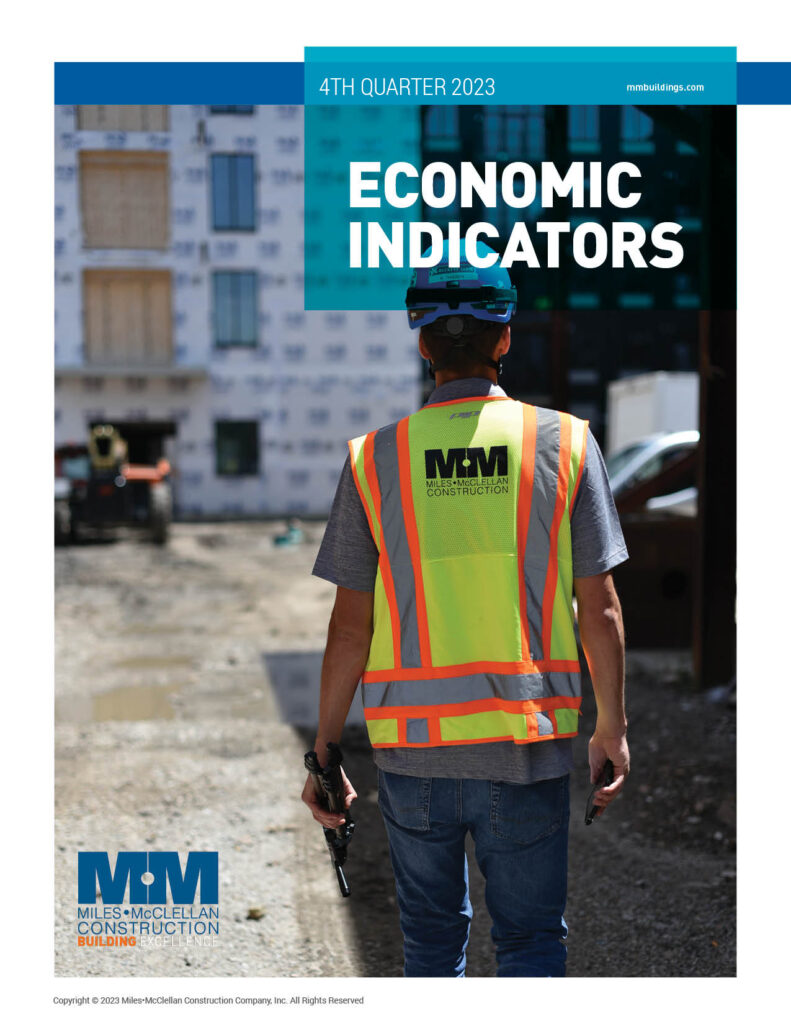2023 Q4 Economic Indicator

 The follow excerpt it taken from the FMI 2024 North American Engineering and Construction Industry Overview, First Quarter Edition.
The follow excerpt it taken from the FMI 2024 North American Engineering and Construction Industry Overview, First Quarter Edition.
“Best case assumptions for our forecast is for a recession in 2024, likely sometime during the first half of the year. These expectations are based on a range of predictive economic indicators, but especially the inverted yield curve. The duration of the economic contraction will depend on the U.S. policy response, but as with historical cycles, the impact on the construction industry will likely be longer lasting.”
All the lead indicators presented in our Q4 2023 Economic Indicator continue to reflect a downward trend and support the statement made by FMI above. Additionally, what we are experiencing in the market only supports this story further.
- We have watched private bidding opportunities almost completely dry-up. We attribute this to current interest rates, owners’ fear of a recession, and the sheer number of vacant office spaces available.
- With less private bidding opportunities we have had to jump into the public bid market which makes up just over 90% of our total bid opportunities. For the first two months of 2024, in both Columbus and Charlotte, we have seen an average of 6-8 general contractors per bid list, when a year ago at this time there were only 2-3 bidders per list.
- Our teams have also seen a wider geographic area of subcontractors bidding on projects. Previously our subcontract bidders were contained to the Columbus market. Now we are receiving bids from subcontractors we have never received bids from before, including out of state firms from West Virginia, Michigan, Indiana, and Illinois.
- Additionally, the sheer number of bids that we are receiving per subcontractor trade has more than doubled. Previously, we would receive 2-3 bids per trade category, and now we are receiving 6-7, the only exception being mechanical, electrical and plumbing. We are still only receiving 2-3 subcontractor bids in these skilled trade categories, and we assume that is because of a shortage in skilled labor in Columbus driven by the number of large, technical projects.
